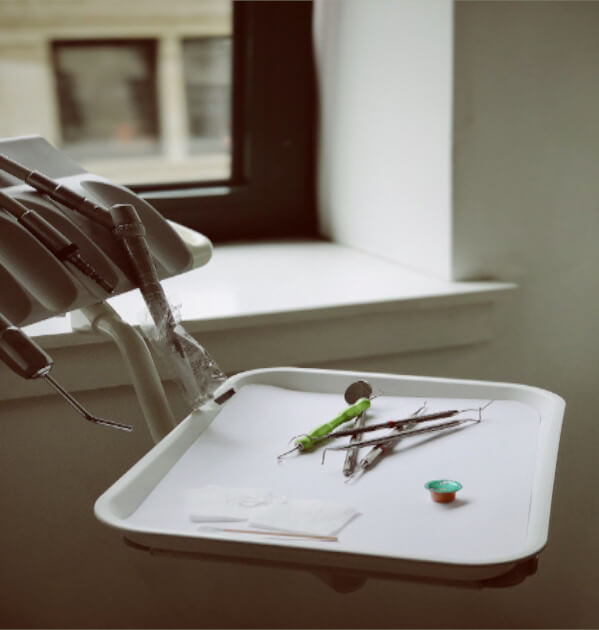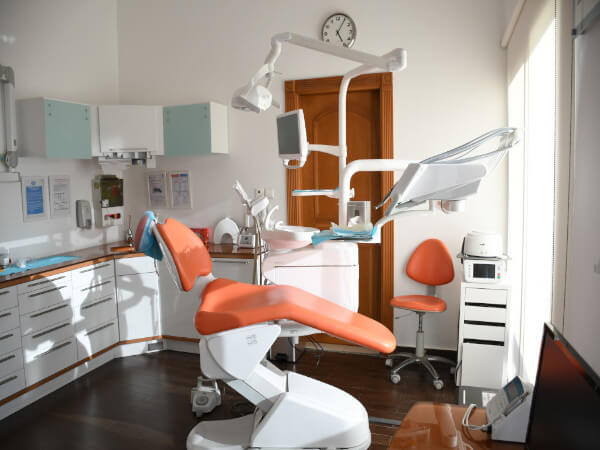
Retainers are appliances you should wear once you remove your braces. They are either permanent or removable.
A permanent or fixed retainer is, basically, a piece of metal wire attached to the inner side of your teeth. The metal wire is glued to your teeth to hold them in place so that they don’t move back to their pre-braces position.
Your orthodontist may advise you to use a removable retainer for the upper teeth and a fixed retainer for the lower. As fixed retainers are more convenient, they are becoming popular, especially among people with a busy lifestyle.
Are you wondering whether permanent retainers are the right choice for you?
In this article, I discuss how permanent retainers work and describe their benefits and drawbacks.
How Do Permanent Retainers Work?
A permanent retainer is commonly referred to as a lingual wire because it is fixed to the back surfaces of the teeth.
Since a glue known as bonding material is used to attach the retainer, it is often called a bonded retainer too.
To resolve the issue of crooked or misaligned teeth, orthodontists resort to braces. Braces help move your teeth into the right alignment and correct problems like crowding or spacing.
However, many people discover that once their braces are removed, their teeth begin to shift back to their previous position. To maintain the teeth in their new position, your orthodontist would want to restrict their movement. Otherwise, the entire treatment may end up failing due to relapse.
This is where permanent retainers come into play. Permanent retainers secure the teeth effectively. You don’t need to take them out and place them back like removable retainers.
How Much Do Permanent Retainers Cost?
The charges of the first permanent retainer are typically covered within the overall charges of the braces.
However, you can expect the cost to be anywhere between $150 to $500 if you need to get a replacement for a broken or lost permanent retainer.
What Are The Benefits of Permanent Retainers?
Convenient– You won’t need to take your retainers on and off.Almost no speech interference– You won’t be uneasy while speaking in public.Unnoticeable– No one would notice that you have your retainers in place as the wires are placed on the inner and less visible surfaces of your teeth.No fear of loss or damage– As the retainers are attached to your teeth, there is less chance of losing a retainer.
What Are The Benefits of Removable Retainers?
Removable– You can remove them when you want to eat something.Easy to clean– Maintenance of removable retainers is easy as you can soak them in a cleaning liquid and wash them with water.Better for upper teeth– Fixed retainers on upper teeth are prone to damage as your lower teeth may bite on them.Easy to maintain oral hygiene– You can just take them off before brushing or flossing your teeth.
What Are The Drawbacks of Permanent Retainers?
If the root cause of misaligned teeth is addressed accurately, there is no reason why the teeth will move to their previous positions, and therefore, there is no need for a permanent retainer.
So if your orthodontist prescribes a fixed retainer, it may mean that your orthodontic issue is still unresolved even after the removal of your braces.
Moreover, permanent retainers may pose some problems as well:
Diminished proprioception- Our teeth are meant to function as individual units while moving about independently within their respective sockets. Binding them together with a fixed retainer can decrease the proprioceptive property of our teeth.Early bone loss- Young and healthy individuals experience bone loss around the teeth that are bound by a permanent retainer. Our teeth move mildly during activities like chewing and clenching. Retainers restrict the normal tooth mobility leading to the decreased blood supply to the periodontal ligament and subsequent crestal bone loss.Potentially invasive procedure– The teeth need to be etched and a composite filling is applied to hold a metal wire or mesh chain. Applying, maintaining, and removing this material over time may lead to some damage to the enamel layer of your teeth. This is mostly dependent on the skills and temperament of your dentist.Difficult to maintain oral hygiene– Brushing and flossing with a piece of wire glued to the inner surfaces of teeth can be quite a challenge! You need extra patience, effort, and time to ensure that the area around your retainers is clean while using floss. You may need to use a floss threader to actually fish the floss through the gaps in between your teeth to accomplish this.Need for caution in your food choices– You will need to be more careful while biting on tough foods like bread crusts as you may bend the wire or cause a detachment between wire and tooth. It may take some time before you or your dentist is aware of this detachment potentially causing a need for additional orthodontic work. Make sure your dentist looks at your fixed retainer closely with dental loupes by pushing on each splinted tooth to see if there is a separation between wire and tooth. It’s easy to miss!Uncomfortable– Some individuals do not like the feel of a metal piece rubbing against their tongue at all times.Replacement expense– You should be prepared to pay an extra fee if your bonded retainer breaks off or gets detached. The detached end can even wear down your tongue.
What To Do If My Retainers Just Snap Off?
If your permanent retainers detach from your teeth or bend at some point, you should not try to fix the issue yourself. Neither should you leave the issue unattended. Here’s what you can do:
Call your dentist or orthodontist right away– A detached end of the retainer can be quite harmful as it may injure your mouth and damage your teeth. Hence, consider an emergency and meet your dentist right away to get it fixed. Also, the detached tooth can accelerate in the movement away from its ideal position (its position relative position to the other teeth).Book an appointment with your orthodontist– If your retainer ends are still at their place but the wire is detached from one or more teeth or bent in the mid-portion somewhere, you have some grace time to get it fixed. Make an appointment with your orthodontist and get your retainer repaired or replaced before it causes any further damage.
How To Clean and Floss My Permanent Retainers?
Cleaning your teeth with your fixed retainers can be slightly tricky. Here are a few tips that you can incorporate into your oral hygiene regimen:
Brush your teeth just like you do regularly. Make sure that your bristles pass through the gaps between the teeth so that all the areas around the retainer are covered. A sonic toothbrush may be helpful in this area.Flossing in between the teeth can be tedious during those initial days when you are trying to get a hang of it. You will be an expert with a few days of genuine practice. While inserting the floss between the teeth, care should be taken not to jerk it in as that may harm your gums. Instead, maneuver the floss gently on the sides of the teeth so that the interdental surfaces are properly cleaned.
Final Note
Permanent retainers are a convenient option for holding the teeth in their new positions for the rest of your life.
It has a couple of significant drawbacks and is not meant for every case. Discuss your options with your dentist or orthodontist so that you can decide what is best for you.
My take: Short term (a few years maximum) is acceptable if this is an option you want. However, ultimately, use a removable retainer. Or better yet, address why the teeth are shifting if not held in place by any retainer, fixed or removable.
The post Are Permanent Retainers the Right Choice for You? appeared first on Ask the Dentist.
Did you miss our previous article…
https://dentistintulum.com/?p=226

